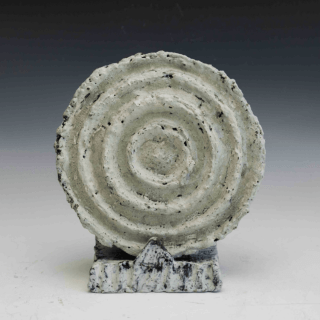
Lucy Lacoste Gallery is pleased to close the 2020 season with an all-female exhibition: Danish Women in Contemporary Ceramics, December 12th – January 5th, highlighting the leading role women have played in the development of ceramics there. This exhibition features the work of Beate Andersen, Anne Floche, Mette Maya Gregersen, Bente Skjøettgaard, Charlotte Thorup, Barbro Åberg, and Gunhild Aaberg, artists in varying stages of their careers, all have received internally recognition through exhibition.
Why have women taken such a leading role in Danish Ceramics, in contrast to other societies? Denmark, a country with an abundance of clay, has a long history of ceramics going back to the Vikings. Ceramic creativity has been fostered by the manufactories such as Royal Copenhagen which hired female artists as designers and gave them studio space to freely create their own work. The country’s affinity for the Arts and Crafts movement of the early 20th century was conducive to female artists setting up independent studios. In addition, there were important teachers such as Thorvald Bindesboll and Richard Kjaergaard who encouraged individual expression in ceramics. Expressive art pottery began to develop at the end of the 19th century. Today, the most recognized ceramic artists in Denmark are women.
The two leading Danish ceramicists of the 20th century were Gertrude Vasegaard and Gutte Eriksen. Vasegaard’s abstraction of the cylinder and minimal decoration became a touchstone for a whole stream of Danish ceramics. Gutte Eriiksen’s approach was free, organic, and often inspired by Japan. She taught so many women throughout her career, they became known as “Gutte’s Girls.” These two renowned artists have been followed by legendary female artists such as Bodil Manz, the most internationally recognized ceramic artist from Denmark, known for paper thin cylinders with handmade decal decoration; Alev Ebuzziya Siesbye, celebrated for vessels of pure color with an unglazed line; and Nina Hole, the creator of burning fire sculptures, founder of the Clay Today collective, the CLAY Museum of Ceramic Art and the International Ceramics Research Center at Guldagergaard.
Lucy Lacoste Gallery has a long history with Danish ceramics beginning with our 2007 exhibition of the collection of William Hull, the American curator and museum director credited with introducing Danish ceramics to the USA in his seminal museum exhibition Danish Ceramic Design (1982). DCD was followed by From the Kilns of Denmark (2002) curated by Hope Barkan and Wendy Tarlow. This important traveling exhibition showed the strength of Danish ceramics and was dominated by women ceramic artists, including Beate Andersen, Bente Skjottgaard, Barbro Aberg, and Gunhild Aaberg. This was followed by Lacoste Gallery’s A View from Denmark (2008), featuring a number of these artists. Barbro Aberg and Anne Floche are artists currently represented by the Gallery.
According to Garth Johnson, “The fact that Denmark boasts a flourishing ceramic ecosystem is because of women. Not only do artists like Bodil Manz continue to push boundaries well into their 80s, but they do so within a network of galleries, residencies, studios, and collectives founded by women. As artists like Barbro Åberg, considered an emerging artist when the exhibition From the Kilns of Denmark stormed these shores back in 2002, become leading figures, a new generation is emerging. Many young artists are turning to pottery and functional design, which fits hand-in-glove with the Nordic Cuisine movement. Others gleefully mix media (and influences) in a quest to wring every ounce of expression from their clay.
As young Danish ceramists take these two very different paths, only one thing is certain. Women will lead the way.”
Garth Johnson (Paul Phillips and Sharon Sullivan Curator of Ceramics, Everson Museum of Art)
More Information: